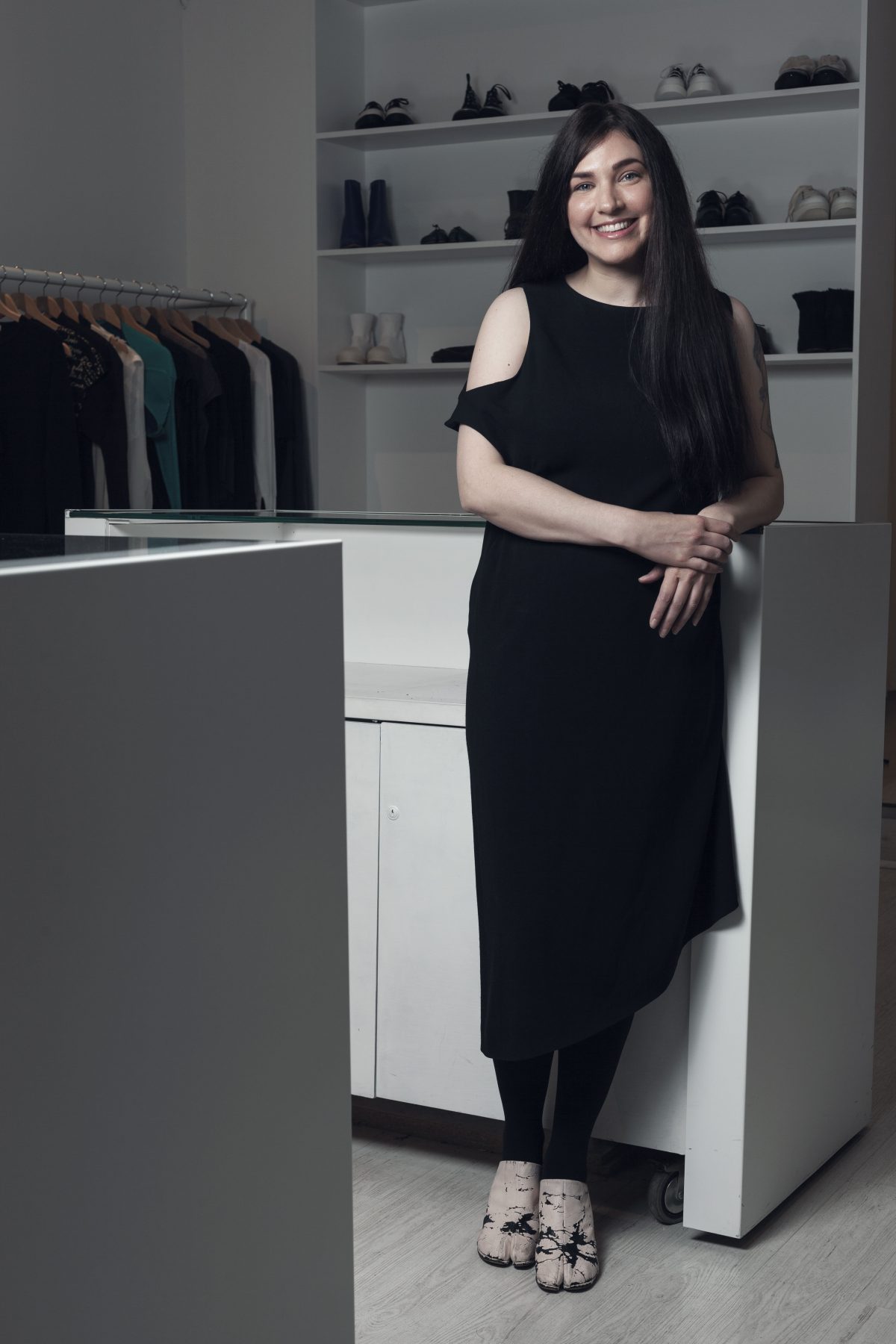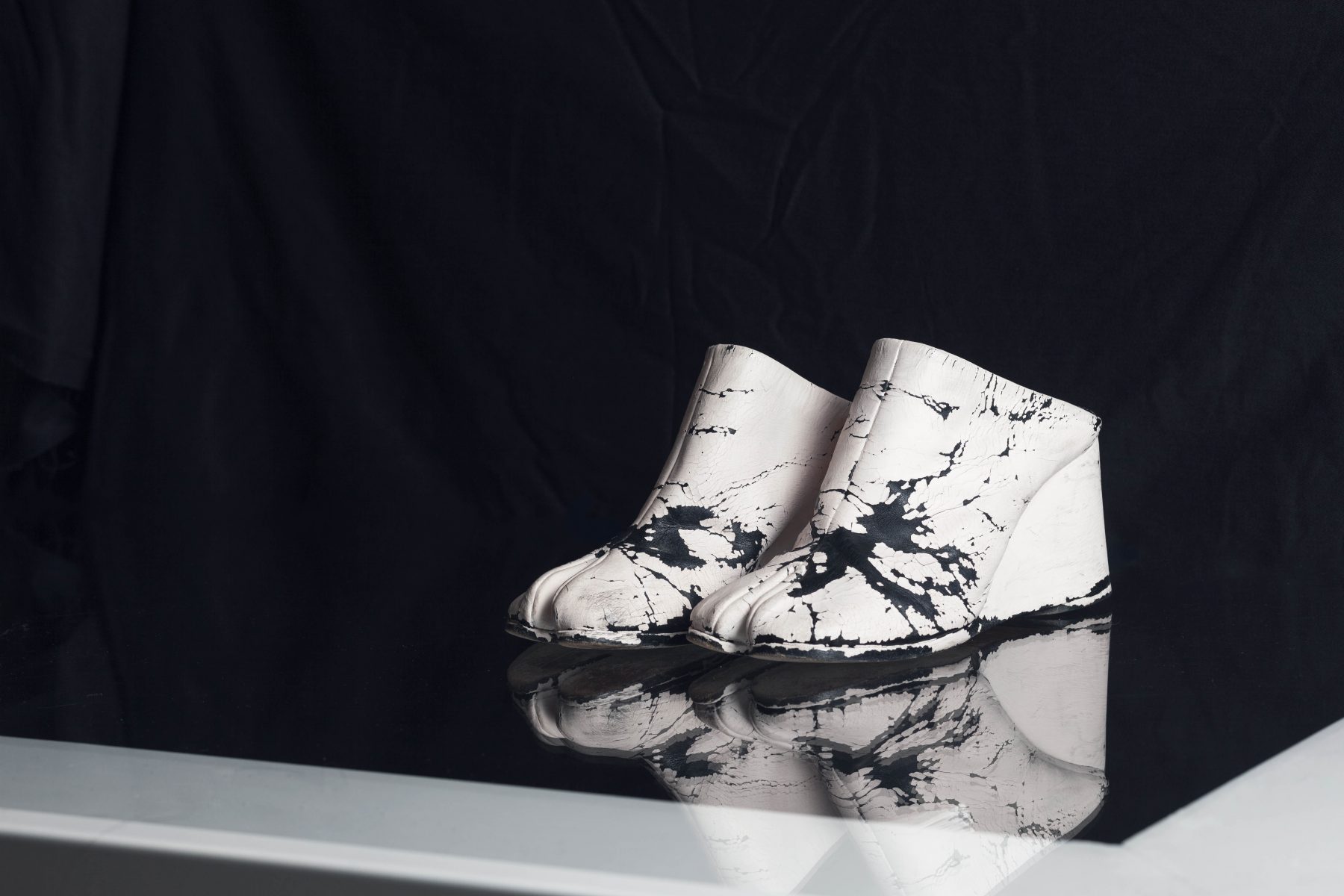
PROFILE
Emily
Nielsenbeck
How do your personal values shape your business?
I’m sensitive to mood and social interactions, so it’s really important that our customers feel relaxed and unpressured while at Bruce. As we don’t advertise, our development has come organically by building lasting relationships with customers and consignors through honest and caring interactions.
What do you look for when choosing which garments to stock on consignment at Bruce?
We choose pieces that showcase good design and construction while utilising quality fabrics and adornments. We aim to source versatile pieces that can be worn many times over the course of its lifecycle. Fortunately, here in Melbourne we have a clientele that appreciates the value of beautifully constructed pieces—many of whom take exceptionally good care of their items, which inevitably encourages the highest possible resale value.
The slow fashion movement means…
It is the acknowledgement that our consumption has an impact, and that we all have a responsibility to consider the consequences of our choices. I try to pay close attention to what resonates personally, not being dictated to by quick cycling trends. I buy items that are ethically made or second-hand, ensuring they are well cared for to prolong their life. I also have a trusted tailor who modifies and mends my clothing when needed.
Emily Nielsenbeck
“I don’t consciously take style cues anymore, I try to keep my attention on how a garment makes me feel. I no longer want to look like anyone else”

How would you describe your relationship with fashion/clothing?
My family would say fashion is in our blood. My great grandparents started a small knitting mill when they first settled in America, and after the Second World War my grandfather and his brother returned home to take charge of the business with the dream of expansion. They grew slowly, employing the extended family to fulfil an ever-increasing workload.
In time they pioneered outlet stores and were at one stage the largest knitwear manufacturer in North America. When I was a small child I would go to their offices and get lessons in garment construction and design, and each season I would send my grandfather design sketches to which I would promptly receive a thank you response on company letterhead.
In the late 1980s Chinese manufacturing gained momentum, but my grandfather did not want to offshore the company’s production. Instead, he invested in advanced machinery to keep as much of his workforce as possible. Unfortunately his gamble did not pay off and the company eventually dissolved in the 1990s.
At 15, I began working as a design assistant at a small design house on Ludlow Street on the Lower East Side. I was fully invested in my career and thrived in the fast paced, deadline driven, all-consuming role. By my sixth and final year, we were showing at New York Fashion Week and had expanded to being stocked at Barneys NY, Saks Fifth Avenue, Beams Japan and other specialty stores throughout the world.
The demands of such a relentless role however, eventually took their toll and I grew disillusioned with the need for pre-collections, holiday lines, special editions and the constant hunger for growth and consumption. At 21, I left my job and New York to focus on the renewable side of the fashion industry by starting a business as a vintage buyer supplying to NY boutiques. I would thrift daily and take great joy in finding amazing pieces that were discarded and overlooked.
As the years passed exceptional pieces became harder to find, and my days of sifting through huge warehouses of clothing would leave me with little reward. A realisation developed during these years as I saw thrift stores being flooded with poor quality, mass-produced fast fashion; if I wanted to be apart of the fashion industry I would need to find a sustainable model. And so Bruce was born.
Emily Nielsenbeck
"At 21, I left my job and New York to focus on the renewable side of the fashion industry by starting a business as a vintage buyer supplying to NY boutiques. I would thrift daily and take great joy in finding amazing pieces that were discarded and overlooked."
What is your personal uniform?
I would define my uniform as a soft minimalism. Linen, cotton, cashmere, and leather in a palette of grey, navy, and black. I predominately wear pieces by designers Yohji Yamamoto, Forme D’Expression, Uma Wang and The Row.
Who / what do you look to for style cues and why?
I don’t consciously take cues anymore; I try to keep my attention on how a garment makes me feel. I no longer want to look like anyone else, though when I was young I loved Edie Sedgwick and Ciao Manhattan was a huge influence. I also loved Isabella Adjani in Nosferatu—I’m sure it still informs my sensibility.
What tends to keep you up at night?
Right now it’s my eight month old daughter, she is teething and feeding through the night. From a business perspective I worry about our sustainability. We’ve weathered a global financial crisis, but our fear now is the possible dilution of smaller fashion houses by huge fashion companies offering more for less and encouraging people to consume beyond their needs. In that environment businesses like Bruce would simply not survive.
Who has impacted your life the most and how so?
My grandmother is a woman of great style and even greater kindness. She can find beauty in times of darkness and has an adaptability and humour that I admire. My husband and business partner Daniel has been an enduring force, and someone who pushes me to find the best in myself. My daughter Liv has brought an enormous amount of light and love into my life, and shown me that there is still much more to experience.
What does the outfit in your portrait mean to you?
My only knowledge of Australia was from my grade six camp counsellors, and iconic films and advertisements portraying Australia as a land down under. Arriving in Melbourne was a huge life shift for me. I'd never contemplated living abroad and being in a new unfamiliar land left me feeling alienated and untethered, not to mention terrified. I have a paralysing fear of snakes, spiders and all things poisonous so my only condition was that we live in the city away from the bush and danger.
The first few months were difficult and adjusting wasn't easy. Thankfully Gertrude Street in Fitzroy resonated with me and was only moments from my apartment. One day while browsing the shops I stumbled upon this amazing vintage mainline Margiela dress, and instantly fell in love. It has since become a symbol of home and finding my place in a new land.
Photography Stuart Chen
Assisted by Hamish Heath
Creative Direction Olivia Smythe & Sigrid McCarthy
HMUA Jessica Canzano
Thanks to Shop Bruce

